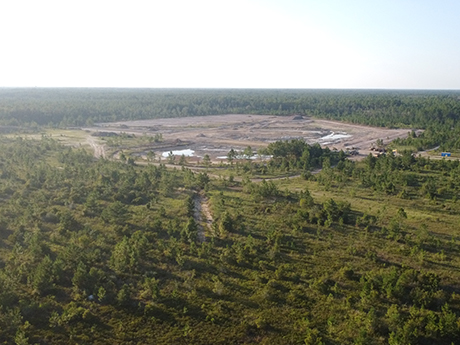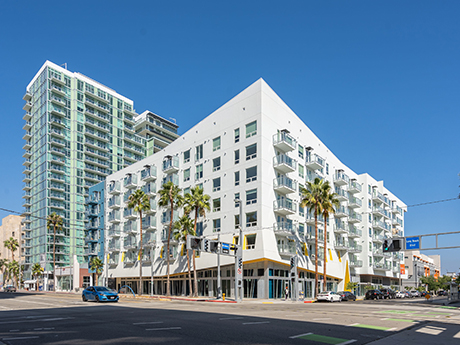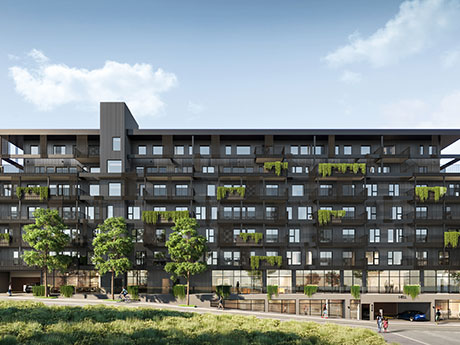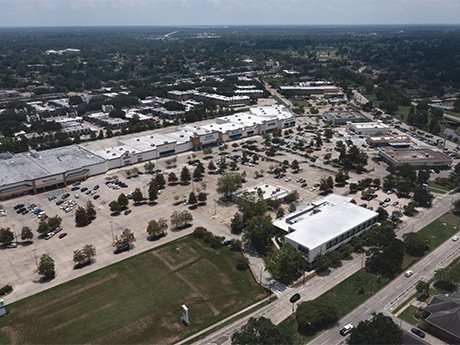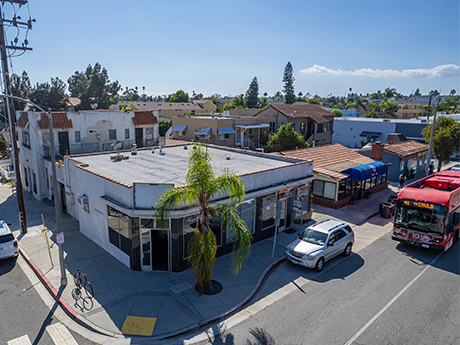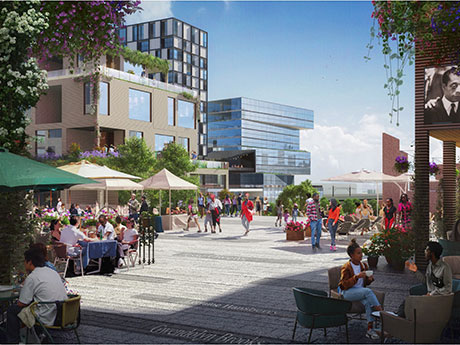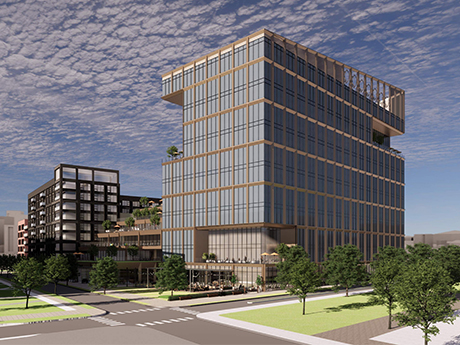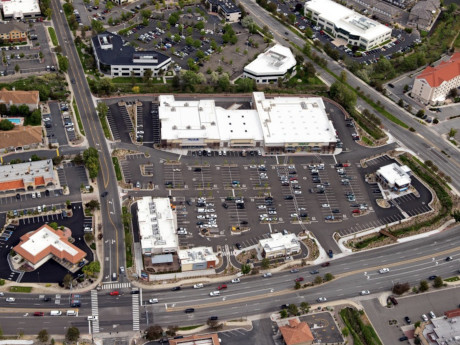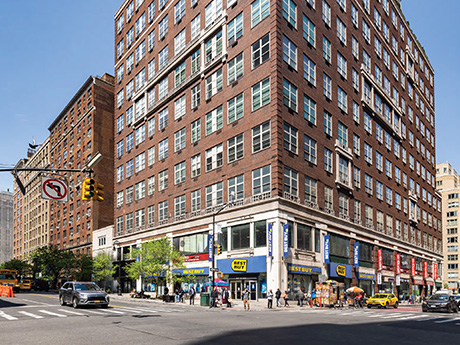For the past decade, the inventory of industrial space in the Greater New Orleans market has not been large enough to meet demand. Comprising mostly older product that would be considered Class B or C in more populous markets, New Orleans-area warehouses have an overall vacancy rate of less than 2 percent. The demand has resulted in rising rental rates. Development of new product is warranted, but a combination of factors has prevented new projects from being built. Finally, in 2023, despite increased construction costs, high insurance costs and rising interest rates, projects are underway that will accommodate the demand in a market that is long overdue for new, modern warehouse product. Despite having all the ingredients to be a major industrial market, including one of the country’s largest port systems, warehouse infrastructure in New Orleans is dated, mostly due to a lack of suitable land for development. Institutional ownership and investment here is limited to select groups that, while chasing higher yields, took the time to learn the market’s dynamics and build local relationships. Historically, as brokers and tenants bemoaned a lack of product, national developers were reluctant to deploy capital to speculate in an unfamiliar and unproven locale. …
Market Reports
— By Jason Fine, Managing Director, JLL — Situated along the Southern California coast between Los Angeles and Orange County, the City of Long Beach continues to be a strong option for businesses and residents. The city has recently delivered low- and median-income housing, in addition to luxury product, with more of each in the planning stages. This has allowed Long Beach to continue experiencing growth from aerospace, port-related businesses, oil and professional services. A few companies that have recently relocated to Long Beach include Blue Shield, Fluor, Relativity Space, SpinLaunch and Vast. Additionally, the city’s economic development department and newly elected mayor have taken a proactive stance, implementing strategies and marketing the city as a business-friendly destination. While the regional and national office leasing trend is seeing many tenants going to a hybrid model, the Long Beach office market has seen a steady increase in vacancy and rental rates despite no new office building supply being added to the market since the pandemic. For the third quarter, the total Class A and B office vacancy (including sublease space) for downtown Long Beach is at 33 percent, with rents sitting at $2.71 per square foot, per month (full-service gross). Suburban …
Multifamily Investors in Long Beach Navigate Opportunities Amidst Market Adjustments, New Developments
by Jeff Shaw
— By Juan Huizar, President, Sage Real Estate — Nationwide, multifamily sales are declining, while interest rates are rising. Buyers are adopting a patient approach, leading to properties lingering on the market for extended periods. This, of course, is accompanied by noticeable price reductions. Buyers are anticipating further price drops, while some sellers are slowly becoming more realistic in their pricing. Long Beach has perennially attracted multifamily investors with more than 7,500 individual apartment buildings. This is mainly composed of older housing stock, which creates a fertile ground for investors and syndicators. Often regarded as the last affordable beach city, Long Beach — despite being overshadowed by other Southern California communities or grouped with Los Angeles — stands as a significant population and employment hub, ranking as the sixth-largest city in California. Existing apartment sales for properties with five or more units have plummeted by more than 65 percent. Notably, 2021 was an exceptional year due to a confluence of factors, including rising real estate values and a low cost of capital. The current decline is more a reflection of increased capital costs than a trend over the past decade, with some properties selling for less than their 2019 prices. …
By John Bogdasarian, Promanas At a time when the multifamily marketplace is experiencing some turbulence after an extended period of strong growth, some developers, owners and investors are rethinking, repositioning and reworking their approach to a commercial real estate sector that has historically been one of the most reliable investments and dependable asset classes. Current market conditions, however, are not as favorable. A report by The Motley Fool this summer highlighted a 21 percent decline in apartment value. Overbuilding has saturated some markets, contributing to an increase in vacancy rates to around 7 percent and helping push rent growth down to 0.8 percent. In conjunction with persistently high interest rates and increasing delinquency issues with renters, the result is that building a traditional apartment product is a very tricky proposition. Even though the apartment market is somewhat dysfunctional at the moment, there are still plenty of opportunities in multifamily. For thought leaders and forward-thinking commercial real estate investors and professionals, the key is to understand the market, be flexible in your development and investment strategies, and be able to execute an approach that does work in the current marketplace. For those looking to maximize multifamily returns in 2024, there are …
The New Orleans retail market is in a state of flux like other markets across the country. The retail experience is changing for the end user, with an increase in online shopping, “try before you buy” customers and quicker walkthroughs. Retailers are left in an odd position, caught between experiential interactions with customers and trying to have them remember to purchase later at home. While the retail market is changing, the Greater New Orleans area is different due to the scarcity of space available for new construction and a stable flow of stores closing or relocating. Our market creates a streamlined experience where consumers have “retail corners” they can visit to shop — such as downtown New Orleans, especially the iconic streets of Canal and Magazine — but also the suburbs that include Metairie, Elmwood and the Westbank. With the concentrated shopping setup of the market, customers can shop more efficiently, and retail investors see the New Orleans market as a more demanding and creative place to build and open stores. Submarket by submarket The retail customer in New Orleans detests spending unneeded time in the car, so when customers can shop locally, get what they need and get it …
— By Jason DuFault, Regional Managing Director – Southern California, KW Commercial — With a population of about 440,000, the City of Long Beach has grown substantially over the past two decades. This is due, in part, to the draw of its coastal location, public spaces, dining and nightlife, employment, the ports of Los Angeles and Long Beach, and its many tourist attractions, including the Queen Mary and the Aquarium of the Pacific. This all bodes well for the retail sector. However, over the past 18 months, the retail market has been inconsistent for success based on location. The city’s overall vacancy rate is currently around 4.3 percent, with the most challenged market being downtown Long Beach, which is currently at 4.6 percent. While the vacancy is still low by most standards, I believe it will likely increase before it gets better. Like many CBDs across the nation, Long Beach’s office vacancy has been high. The decline in the daytime population has retailers struggling. The most challenging projects to rent out retail-wise seem to be the newer vintage mixed-use properties. On the other hand, smaller submarkets in east Long Beach, such as Second Street and Naples, have been strong, giving …
By J. Byron Brazier Equitable development is a knotty concept. In theory, development equity sounds easy and essential. In practice, it’s not clearly defined and not easily sustainable — economically, socially or politically. Equitable development is generally seen as an approach that revitalizes and empowers disinvested communities by meeting residents’ wants and needs, diminishing disparities and spurring economic growth, ensuring residents benefit from such growth and creating conditions for people to live healthy and happy lives. That definition is accurate but incomplete. Equitable development has multiple meanings, some less intuitive than others. Chicago lawyer Danielle Meltzer Cassel says there are three ways to define development equity. The first is the one above, which is the direct model of equitable development. This model rectifies inequality through what development directly produces, such as affordable housing in areas where there’s little or no such housing, good jobs for people who are unemployed or underemployed, greater access to quality healthcare and education, and other resources that allow communities to thrive. There are two other definitions, the indirect model and what Cassel calls the procedural model of equitable development. The indirect model involves real estate developments that do not directly benefit disinvested communities, such as …
Shell’s announcement in mid-September to relocate its home from the Central Business District (CBD) of New Orleans to the planned 50-plus acre River District rocked the office market. The oil and gas giant has been in the Hancock Whitney Center (formerly One Shell Square) since 1972, and will be rightsizing in a Class A mid-rise office building that will anchor the River District. The planned building will be approximately 142,000 square feet and home to 850 to 1,000 employees. What a huge win for the planned River District and city of New Orleans. However, the void left in Hancock Whitney Center raises the question, what will building ownership group do with all of the space that Shell vacates? If the current occupancy rate stands, Hancock Whitney Center will have over 500,000 square feet of vacant space. Elsewhere, Entergy is in the process of a major contraction in its building located at 639 Loyola Ave., and earlier this year, Freeport McMoRan vacated over 100,000 square feet of space at 1615 Poydras. Both buildings are also located in the CBD. A number of office towers have loans maturing within the next 24 months, and the logical assumption is that securing financing will …
— By Tad Loran, Vice President, Retail Specialist, Avison Young | Western Alliance Commercial Inc. — The Northern Nevada retail sector has made quite a comeback post-pandemic as both the population and job market expand. The retail vacancy rate ended last year at 4.7 percent and increased 20 basis points to a current level of 4.9 percent, while market rent increased from $1.70 to $1.83 on a monthly basis for the same period. South Virginia, Meadowood, South Reno and the North Valleys are all recipients of a thriving market. Tenants that have recently entered the region or are expanding in Northern Nevada include Petco, Panera Bread, Colombia Sportswear, Voodoo Brewing Company, the Human Bean, Starbucks, Cracker Barrel, Mountain Mike Pizza, Take 5 Oil Change, AutoZone and Five Below. Tenants with recent closures include Bed Bath & Beyond, Lucky Brand Jeans, Tuesday Morning, Steak ‘n Shake, Sizzler Steakhouse and Claim Jumper. Unemployment in Nevada increased to 4.4 percent in July 2023 from 3.5 percent in December 2022. Even though there was an increase, this continued low unemployment rate has created a challenging labor market with employers lacking the necessary labor pool to grow. Unfortunately, this shortage has led to some prospective new businesses …
By Taylor Williams Across Manhattan’s major retail corridors and pockets, leasing agents, operators and owners are all gaining greater clarity on what levels of rent various submarkets can bear and, by extension, how much spaces are truly worth. After three years of disruptions of the public health and financial variety — each devastating in its own right — a reset of sorts is a major windfall for the country’s largest and arguably most dynamic retail market. Closing deals is challenging enough when all parties are on the same page and the economy is stable. When markets are going through tumultuous phases of discovery in which perceived valuations of spaces fluctuate wildly, negotiations tend to flame out even more quickly — if they even get going at all. “A year ago in Manhattan, you could have two adjacent stores, and one might have been asking for $120 per square foot while the other wanted $220 per square foot,” says Chase Welles, partner at TSCG, an Atlanta-based brokerage and consulting firm that is active in New York City. “There’s certainly more definition relative to last year, and the range of asking rents in each submarket has narrowed.” “The market has become more …


